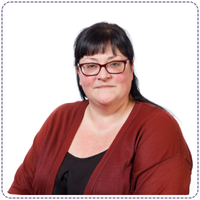Advice For Schools, Safeguarding
Addressing Harmful Sexual Behaviour in Education
With sexual abuse in schools creating a myriad of challenges, Independent Consultant and Trainer of KLM Consultancy, Karen Martin, sheds some light on this complex subject.
On 10th June 2021, Ofsted published a review of sexual abuse in schools and colleges. The rapid review was in response to the media reaction to Everyone’s Invited (2021), an online platform developed for survivors to share their stories completely anonymously.
Ofsted’s sexual harassment report confirmed the scale and nature of the problem. In particular, it highlighted the need for schools and colleges to have robust safeguarding in place to recognise and respond to peer on peer sexual harassment and violence with a view that ‘schools, colleges and multi-agency partners act as though sexual harassment and online sexual abuse are happening, even when there are no specific reports’ (Ofsted, 2021).
While the Ofsted sexual harassment report has provided a much-needed starting point, in many ways, it has left more questions than answers for education professionals who might be feeling overwhelmed on how to tackle such a complex and emotive issue.
What is Harmful Sexual Behaviour (HSB)?
It’s helpful to think about definitions when approaching the issues highlighted within the Ofsted sexual harassment report.
The report references peer on peer sexual harassment and violence. This language limits the scope of the problem and suggests that behaviour is at one end of a continuum or the other. The most widely used and understood definition of harmful sexual behaviour (HSB) is as follows:
“Sexual behaviours expressed by children and young people under the age of 18 years old that are developmentally inappropriate, may be harmful towards self or others, or be abusive towards another child, young person or adult.”
Hackett, Holmes and Brannigan, 2016.
An important element of this definition of harmful sexual behaviour is understanding when sexual behaviours are developmentally ‘appropriate’ to recognise when behaviours might be considered ‘inappropriate’ and outside normative developmental expectations.
Establishing these boundaries comes down to understanding basic child development at each age and stage of a child’s development from birth to adulthood. If we cannot recognise normative behaviour, we are unlikely to successfully identify when something may be more problematic. However, it is not easy.
Hackett’s (2014) Continuum of Behaviour supports us in thinking where sexual behaviour might sit on the continuum and can help us decide when and what action needs to be taken.
This will vary across local authorities, and it is important to understand what the referral pathways and thresholds are within your own locality.
If the behaviour is considered inappropriate, then a short piece of educative work is needed.
However, if the behaviour is identified as problematic or above, then greater understanding is needed to ensure the child engaging in the HSB is safeguarded, and the current or potential victims are too.

(Hackett, 2014)
Creating Consistency in Terminology
When describing sexual behaviours, understanding the body parts and using the biological names are vital to ensuring that all individuals have the same information and understanding as everyone else.
Unhelpful words or phrases that have no meaning to anyone or different meanings from one person to another can make the complexities of this type of behaviour even more confusing.
If we are all using a common language, there is no obscurity. Equally, phrases such as ‘sexually inappropriate’ or ‘sexualised language’ are unhelpful. What is needed most is:
- Context and detail
- Accurate recording of information
- Clear policy and thresholds as to when action is needed
The complexity of identifying behaviour and where it sits within the continuum is even harder to define when consideration is given to the emotive nature of sexual abuse and how our own experiences, values, beliefs, and internal bias may impact how sexual behaviours are perceived or judged.
Diversity plays a significant role in our own internal bias. For example, if we consider sexual behaviours from a gender perspective, a commonly held belief that victims are females and perpetrators are males can impact how we view the behaviour.
If we start to think about this from a religious, cultural or ethnic perspective, it further challenges some of the commonly held beliefs about who engages in sexual behaviour, what our thresholds of acceptability may be and how it is addressed differently within families and communities.
Putting a Stop to Sexual Harassment and Violence in Schools
Ultimately, the Ofsted sexual harassment report has highlighted a problem that has always existed in school and college settings but has often gone unrecognised or avoided.
Times have changed. Training of all education staff from lunchtime supervisors to senior management is needed to ensure all staff can:
- Recognise sexual harassment in school
- Identify where it sits on the Continuum of Behaviour
- Establish a clear understanding of safeguarding procedures and processes to access locally available support
For any further support addressing harmful sexual behaviour in your school or college, take a look at our Safeguarding Consultancy services at Services For Education.







